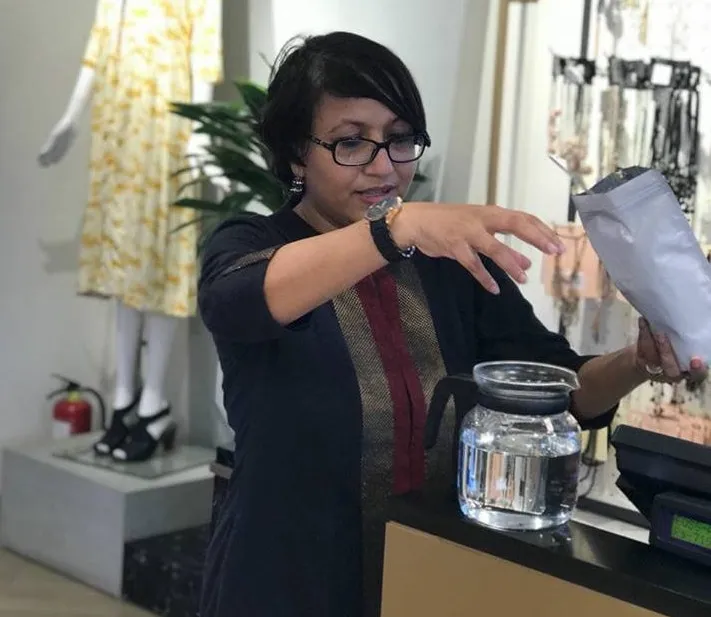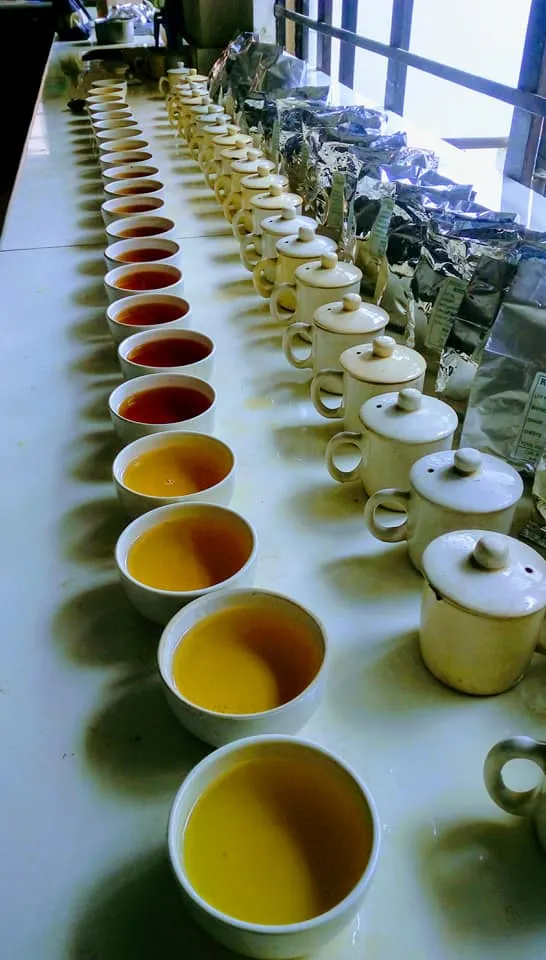In search of the perfect brew: Susmita Das Gupta’s tea journey from Bengal to Bengaluru
A tea is to its artist what wine is to a sommelier. In conversation with YSW, Susmita Das Gupta busts some popular myths, shares her happiest tea memory, and takes us on a journey around the lush green tea estates in India.
Smell, swirl, sip. Pretty much like wine, there are the aesthetics involved if you want to savour that perfect cup of tea. And when we say tea, mind you, it’s not chai – the Indian version where tea leaves are literally ‘cooked’ in a pot of water and milk with sugar. A tea is to its artist what wine is to a sommelier.
Just a few minutes with Susmita Das Gupta, and it’s evident that she takes her brew very seriously.

Susmita at her favourite activity - tea brewing
Also read: It is a plate full of stories at the Hungry Travellers Café
She insists on differentiating tea and chai, a request that fellow blogger Karthik Kannan dutifully obliged to during their Tea Talks and Travel Stories workshop, held recently at the Hyatt Centric in Bengaluru.
Later, as she takes time out for a chat with YourStory Weekender, Susmita, the founder of Smart IDeAS, chuckles at my chai question. “Chai is an Indian variety of cooking the tea – you put water, milk, chai leaves, sugar, and you boil it – this in my definition is proper chai. A tea is never cooked, it’s brewed. And it has a very different process as well.”
That every tea has a different brewing style is not much of a secret, but what came as an absolute surprise were the tea myths - which Susmita was happy to bust from the very beginning of our conversation. It began with the dreaded ‘is green tea healthier?’ debate, and no prizes for guessing this one right! Says Susmita,
“The health aspect of a tea is based on how much oxidisation has happened in the tea leaves; lesser the oxidisation, healthier is the tea. Going by this, white tea is the least oxidised, so logically white tea is the healthiest, it has the highest amount of antioxidants.”
She adds, explaining the origin of this myth, “White tea is extremely expensive, and it’s not made everywhere in India – so the next best option is green tea.”
Green, white, black, orthodox – even as the debate around ‘which tea is better’ rages on, there’s another beverage quietly stealing the thunder, our good old coffee. From Monday morning blues to the mean red moods, coffee seems to be the ultimate solution. Naturally, then, the question arises, ‘is coffee better than tea?’
Susmita quips, ‘there is no comparison’.
"If you really have to compare tea, the comparison could be in a certain way with wine, but not with coffee.”

Pleased with my newfound knowledge on the oldest-known beverage, I wonder how does she know it all. Does it take some special kind of education to master the art of brewing, and above all what is life like for a tea artist?
As it turns out, it involves a lot of experimenting.
“I begin my day with my morning tea, and usually it is Darjeeling tea. And the afternoon is for all of my experiments, trying other kinds of teas. Typically, I get a lot of tea estates to send me samples and review them.”
Susmita’s journey with tea began five or six years ago. Growing up in Kolkata, the very aroma of the leaves is embedded deep in her memories. She remembers her visits to the shops that sold tea out of the wooden boxes with her father, a tea connoisseur. Twenty years and a couple of job changes later, she has now made her love for tea a full-time job.
“I was working on the social media strategy for a London-based tea brand,” she recollects, “Around the time, I started researching and experimenting with these teas. I think this mental memory of the smell triggered everything, and impromptu, I decided to have some guests over - those who loved tea - and create a group. About 10-12 people turned up for that event, and this slowly turned into a major thing.”
Now, Susmita organises regular workshops on tea brewing and even has plans to start a tea certification programme. Around two years back, she organised a tea festival in Bengaluru, sparking interest in a state where people are not predominantly tea drinkers.
“Tea festivals are organised in many parts of India – Assam, Darjeeling – but they are mostly for B2B clients. My fest (Tea Festival India) was for actual tea drinkers. I had some top brands put up their stalls along with live music, poetry sessions, and photography sessions.”
Also read: A toast to the good times: The Vault Biennale festival celebrates luxury beverages
Tea and travel
For more reasons than one, tea is closely linked to many of our travel stories. Whether it is a road trip along the lush green trails of Munnar, Kangra, and the Nilgiris, or along the picturesque sceneries in the northeast, in the Dooars, Darjeeling, and Assam; there is a fond tea memory associated with every journey.
One such memory is the visit to the Marybong tea estate (in Darjeeling) for Susmita. After braving the bitter cold, a warm welcome from the general officer of the estate came as a pleasant surprise. “Usually, these estate officials are like royalty, so when he invited us to his bungalow, we were quite surprised. He sat down with us, served us tea, and answered all my tea-related queries,” she shares.

Susmita now regularly hosts events for tea connoisseurs
As a tea connoisseur, it doesn’t come as much of a surprise that Susmita has travelled to all these places - Darjeeling, Munnar, Nilgiris, Kangra. In her opinion, if you travel to a place, and “do not understand the local culture, do not immerse yourself in this whole local experience, then you really have not seen that place.”
“If someone is traveling to a tea estate, “I would suggest to be a little more adventurous and stay in a tea estate bungalow.”
Through her stories evoking images of lush green estates and aromatic memories, Susmita opens a whole new door into traveling and tea drinking. Whether you are a chai lover or a tea connoisseur, you can’t help but picturise your next vacation, into the far off valleys and tea estates of India.







